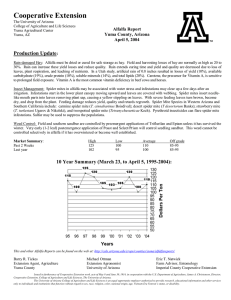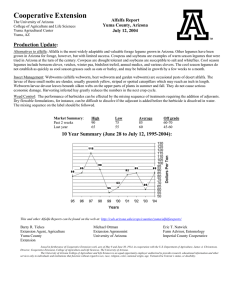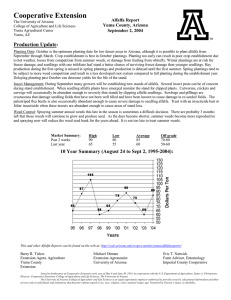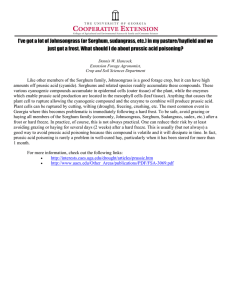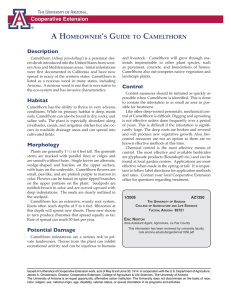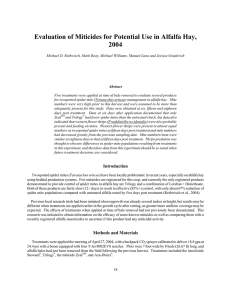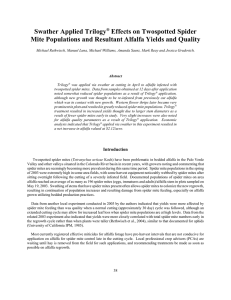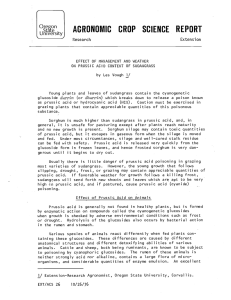Cooperative Extension Production Update :
advertisement
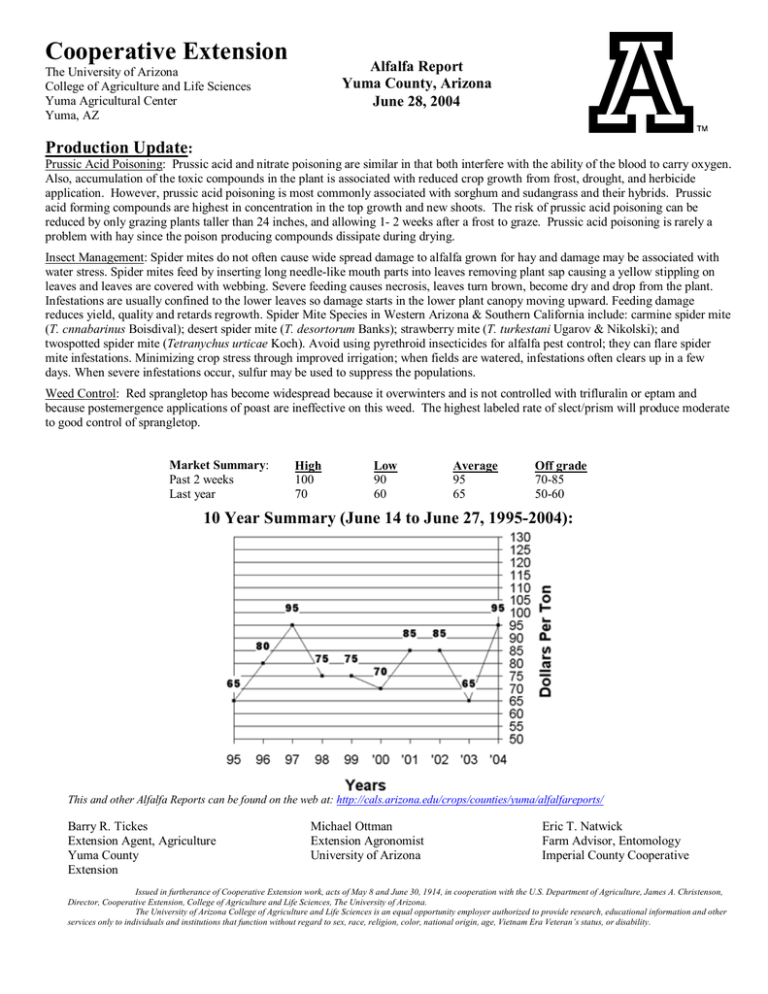
Cooperative Extension Alfalfa Report Yuma County, Arizona June 28, 2004 The University of Arizona College of Agriculture and Life Sciences Yuma Agricultural Center Yuma, AZ Production Update: Prussic Acid Poisoning: Prussic acid and nitrate poisoning are similar in that both interfere with the ability of the blood to carry oxygen. Also, accumulation of the toxic compounds in the plant is associated with reduced crop growth from frost, drought, and herbicide application. However, prussic acid poisoning is most commonly associated with sorghum and sudangrass and their hybrids. Prussic acid forming compounds are highest in concentration in the top growth and new shoots. The risk of prussic acid poisoning can be reduced by only grazing plants taller than 24 inches, and allowing 1- 2 weeks after a frost to graze. Prussic acid poisoning is rarely a problem with hay since the poison producing compounds dissipate during drying. Insect Management: Spider mites do not often cause wide spread damage to alfalfa grown for hay and damage may be associated with water stress. Spider mites feed by inserting long needle-like mouth parts into leaves removing plant sap causing a yellow stippling on leaves and leaves are covered with webbing. Severe feeding causes necrosis, leaves turn brown, become dry and drop from the plant. Infestations are usually confined to the lower leaves so damage starts in the lower plant canopy moving upward. Feeding damage reduces yield, quality and retards regrowth. Spider Mite Species in Western Arizona & Southern California include: carmine spider mite (T. cnnabarinus Boisdival); desert spider mite (T. desortorum Banks); strawberry mite (T. turkestani Ugarov & Nikolski); and twospotted spider mite (Tetranychus urticae Koch). Avoid using pyrethroid insecticides for alfalfa pest control; they can flare spider mite infestations. Minimizing crop stress through improved irrigation; when fields are watered, infestations often clears up in a few days. When severe infestations occur, sulfur may be used to suppress the populations. Weed Control: Red sprangletop has become widespread because it overwinters and is not controlled with trifluralin or eptam and because postemergence applications of poast are ineffective on this weed. The highest labeled rate of slect/prism will produce moderate to good control of sprangletop. Market Summary: Past 2 weeks Last year High 100 70 Low 90 60 Average 95 65 Off grade 70-85 50-60 10 Year Summary (June 14 to June 27, 1995-2004): This and other Alfalfa Reports can be found on the web at: http://cals.arizona.edu/crops/counties/yuma/alfalfareports/ Barry R. Tickes Extension Agent, Agriculture Yuma County Extension Michael Ottman Extension Agronomist University of Arizona Eric T. Natwick Farm Advisor, Entomology Imperial County Cooperative Issued in furtherance of Cooperative Extension work, acts of May 8 and June 30, 1914, in cooperation with the U.S. Department of Agriculture, James A. Christenson, Director, Cooperative Extension, College of Agriculture and Life Sciences, The University of Arizona. The University of Arizona College of Agriculture and Life Sciences is an equal opportunity employer authorized to provide research, educational information and other services only to individuals and institutions that function without regard to sex, race, religion, color, national origin, age, Vietnam Era Veteran’s status, or disability.
